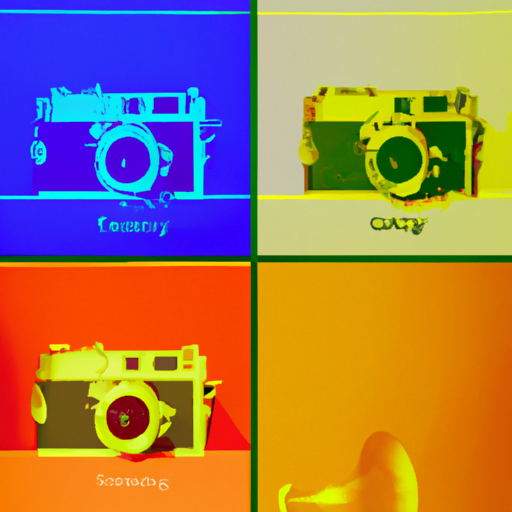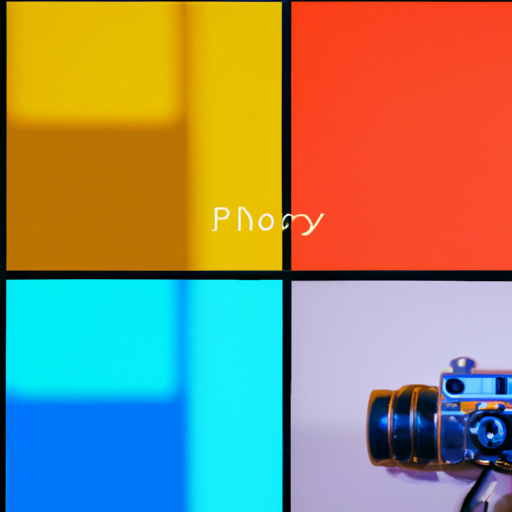
-
Table of Contents
- Innovative Color Theory in Graphic Design
- The Importance of Color Theory in Graphic Design
- Innovative Approaches to Color Theory in Graphic Design
- 1. Monochromatic Color Schemes
- 2. Unexpected Color Combinations
- 3. Color Gradients and Duotones
- Case Studies: Innovative Color Theory in Action
- 1. Dropbox
- 2. Mailchimp
- Conclusion
Innovative Color Theory in Graphic Design

Color is a powerful tool in graphic design, capable of evoking emotions, conveying messages, and creating memorable experiences. The use of color theory in graphic design has evolved over time, with innovative approaches pushing the boundaries of traditional color schemes and combinations. In this article, we will explore the importance of color theory in graphic design and delve into some innovative techniques and examples that have revolutionized the field.
The Importance of Color Theory in Graphic Design
Color theory is the foundation of effective graphic design. It involves understanding the psychological and emotional impact of colors and using them strategically to communicate messages and create visual harmony. By applying color theory principles, designers can enhance the user experience, guide attention, and create a cohesive visual identity.
Here are some key reasons why color theory is crucial in graphic design:
- Emotional Impact: Colors have the power to evoke specific emotions and associations. For example, warm colors like red and orange can create a sense of energy and excitement, while cool colors like blue and green can evoke calmness and tranquility. By understanding the emotional impact of colors, designers can create designs that resonate with their target audience.
- Brand Identity: Colors play a vital role in establishing a brand’s identity. Consistent use of colors across various touchpoints, such as logos, websites, and marketing materials, helps create brand recognition and recall. Color theory helps designers select colors that align with a brand’s values, personality, and target audience.
- Visual Hierarchy: Colors can be used to guide the viewer’s attention and create a visual hierarchy within a design. By using contrasting colors or bold accents, designers can draw attention to specific elements or information. This helps users navigate through the design and prioritize the most important content.
Innovative Approaches to Color Theory in Graphic Design
While traditional color theory principles are still relevant, innovative designers have pushed the boundaries and explored new ways to use color in graphic design. These approaches challenge conventional color schemes and combinations, resulting in fresh and captivating designs.
1. Monochromatic Color Schemes
Monochromatic color schemes involve using variations of a single color to create a harmonious and cohesive design. While this approach may seem limiting, it allows designers to explore the full range of shades, tints, and tones within a single color family.
An excellent example of monochromatic color use is the branding of Apple’s iPhone product line. The sleek and minimalist design of their packaging and marketing materials often feature a single dominant color, such as white or black, with subtle variations in shade and texture. This approach creates a sense of elegance and sophistication while maintaining a consistent visual identity.
2. Unexpected Color Combinations
Traditionally, designers have relied on color wheels and complementary color schemes to create visually pleasing designs. However, innovative designers have started experimenting with unexpected color combinations to create unique and attention-grabbing designs.
A notable example is the rebranding of Airbnb in 2014. The company introduced a new logo and color palette that combined unexpected colors like coral, teal, and deep purple. This unconventional approach helped Airbnb stand out in a crowded market and conveyed a sense of creativity and uniqueness.
3. Color Gradients and Duotones
Color gradients and duotones have gained popularity in recent years, thanks to advancements in digital design tools and techniques. Gradients involve blending multiple colors seamlessly, creating a smooth transition from one color to another. Duotones, on the other hand, involve using two contrasting colors to create a striking visual effect.
Spotify’s branding is a prime example of using color gradients effectively. Their vibrant and dynamic color palette, featuring gradients of bold and contrasting colors, creates a sense of energy and excitement. This approach is consistent across their app, website, and marketing materials, reinforcing their brand identity.
Case Studies: Innovative Color Theory in Action
Let’s explore some real-world case studies that demonstrate the application of innovative color theory in graphic design:
1. Dropbox
Dropbox, a cloud storage service, underwent a rebranding in 2017 that included a fresh color palette. The company moved away from their traditional blue logo and introduced a vibrant combination of colors, including shades of blue, green, and purple. This change aimed to reflect Dropbox’s evolution from a file storage service to a collaborative platform.
The new color palette not only added visual interest but also helped differentiate Dropbox from its competitors. The combination of unexpected colors created a sense of playfulness and innovation, aligning with the company’s values and target audience.
2. Mailchimp
Mailchimp, an email marketing platform, is known for its playful and quirky brand identity. In 2018, the company underwent a rebranding that introduced a new color palette featuring vibrant shades of yellow, orange, and pink.
This bold color choice helped Mailchimp stand out in a crowded market and conveyed a sense of creativity and approachability. The unexpected combination of warm and energetic colors created a visually engaging experience for users, reinforcing Mailchimp’s brand personality.
Conclusion
Innovative color theory in graphic design has revolutionized the way designers approach color selection and combinations. By understanding the emotional impact of colors, designers can create designs that resonate with their target audience. Through innovative approaches like monochromatic color schemes, unexpected color combinations, and the use of gradients and duotones, designers can create visually captivating and memorable designs.
As the field of graphic design continues to evolve, it is essential for designers to stay updated with the latest color theory trends and techniques. By embracing innovation and pushing the boundaries of traditional color theory, designers can create designs that leave a lasting impression and effectively communicate messages.
